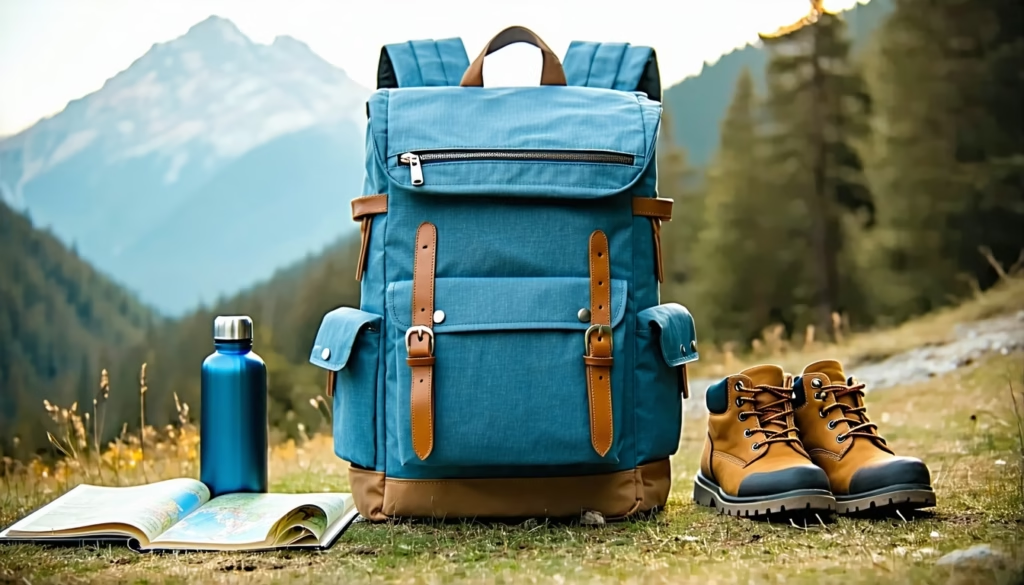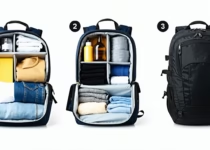Weekender Backpacks With Expandable Compartments: Are They Worth It?

We’ve all been there – you reach your destination only to realize your trusty weekender bag is bursting at the seams. That’s where an expandable weekender backpack can be a game-changer. With a simple unzip or strap adjustment, you get extra volume exactly when you need it.
In this article, we’ll walk through how these backpacks work, weigh the key benefits and potential drawbacks, and share our top tips for picking the ideal pack. By the end, you’ll know whether an expandable option is worth adding to your travel kit.
Understanding Expandable Compartments
How Expansion Works
Most expandable packs rely on a gusset (a fold of fabric) or a dedicated zip line that opens up the main compartment. When you release the zipper or undo the strap, the gusset unfolds and creates extra space. Zip it back up, and the backpack snaps right back to its compact shape.
Common Styles
- Zip-Gusset Packs: A full-width zipper around the front panel opens up the bag like a clamshell.
- Strap-Adjust Models: External straps loosen to raise the side walls and add capacity.
- Hybrid Designs: Combine a small gusset with adjustable straps for moderate expandability.
Evaluating The Benefits
Extra Space On Demand
The biggest perk is obvious – more room when you need it. Imagine picking up souvenirs on the last day or bringing back extra layers after a chilly evening stroll. With an expandable section, you don’t have to cram items or carry a second bag.
Flexible Packing Needs
We often mix business travel with weekend getaways. An expandable pack adapts to your exact itinerary. Use the standard volume for day trips, then pop open the expansion when you pack in gear for an overnight stay or a workout session.
Versatility For Trips
These backpacks make it easy to toggle between light carry-on loads and bulkier luggage. If you’re boarding a flight, stick to the smaller footprint so you fit in the carry-on weekender size limits. When you hit the road by train or bus, pack extra essentials like a travel pillow or heavier jackets.
Considering Potential Drawbacks
Added Weight And Bulk
More zippers, extra fabric, and bulkier frames can push the weight up by a few ounces. If you’re counting every gram, check the empty weight on our weekender backpack weight guide. Sometimes a lean, non-expandable pack edges out the heavier expandable model.
Durability Concerns
Extra seams and mechanical parts like zippers can be points of failure. If the gusset zipper misaligns or the straps fray, you lose that extra capacity. Look for reinforced stitching and high-quality Y-KK zippers to reduce risk.
Loading And Unloading Issues
When the pack is expanded, you may need more effort to keep it balanced. Overstuff it, and the shape can feel uneven, making it harder to access items quickly. We recommend a clamshell-style opening to lay everything flat rather than digging into a deep cavity.
Choosing The Right Backpack
Capacity And Size
First, figure out your baseline needs. Do you pack a laptop and work files, or just a change of clothes and toiletries? Standard weekender backpacks range from 20 to 35 liters. Expansion can add another 5 to 15 liters on top.
Material And Build Quality
Your pack’s shell makes a big difference in longevity. Canvas, leather, and synthetic fabrics each have pros and cons. For a detailed breakdown, check out our canvas vs leather vs nylon backpack comparison. In short:
- Canvas feels rugged but can be heavy.
- Leather offers style but needs more care.
- Nylon usually strikes the best balance of weight, durability, and price.
Feature Checklist
When you’re deciding, here are must-have options to look for:
- Water-resistant or waterproof coating
- Padded shoulder straps and back panel
- Sternum and waist straps for weight distribution
- Lockable zippers or hidden pockets for security
- Easy-access front or top pockets
Reference our weekender backpack features page for a full run-down.
Price And Warranty
Expandable models often cost a bit more than fixed-capacity packs. Decide how much you’re willing to invest. A solid warranty can give peace of mind if a zipper or strap fails after a few trips.
Packing And Organization
Using Packing Cubes
Packing cubes are lifesavers for an expandable bag. They let you compress clothes into neat blocks that slide in and out of the main compartment without shifting. Learn more about our packing cubes in the backpack article.
Balancing Weight Distribution
When you open up the expansion zone, pack heavier items closer to your back and bottom. This keeps the center of gravity stable. Use the sternum strap to secure the top load so the bag doesn’t sway as you walk.
Maximizing Expandability
Avoid stacking items above the gusset line when the pack is closed. That way, you have room to unzip and extend without repacking. Store flat items like folders or tablets at the back panel, then load bulkier items in the expansion compartment.
Maintaining Your Backpack
Cleaning And Care
An expandable pack has extra seams and hardware to clean gently. Hand wash in cool water with mild soap, then let air dry. Never machine-dry – heat can warp zippers. For step-by-step care, visit our cleaning weekender backpack guide.
Storage Tips
When you’re not traveling, store the pack in a cool, dry spot. Expand it halfway so the fabric relaxes instead of creasing. This simple trick helps maintain shape and keeps the gusset from wrinkling. More tips on our store weekender backpack page.
Extending Lifespan
- Treat your pack to occasional waterproofing spray if it doesn’t already have a durable water repellent coating.
- Inspect seams and zippers after every trip.
- Tuck hanging straps into internal pockets to prevent snags.
FAQs
1. What exactly is an expandable weekender backpack?
It’s a travel pack that features extra fabric panels or zippers to increase volume on demand. You pack as usual, then unzip or loosen straps to expand for more gear.
2. How much extra space will I get?
Most expandable models add 5 to 15 liters of capacity, depending on design. Check the manufacturer specs for precise figures.
3. Are expandable packs heavier than regular ones?
Yes, slightly. The extra zippers and reinforcement can add a few ounces. If every ounce counts, compare empty weights on our weekender backpack weight chart.
4. Do expandable backpacks compromise durability?
Potentially, if the zippers or seams aren’t properly reinforced. Choose high-quality materials and solid hardware brands to minimize risk.
5. Can I use an expandable weekender as a carry-on?
Absolutely. Keep it zipped closed to meet size limits for planes, then expand when you reach your final destination.
6. How do I organize items in the expanded section?
We recommend packing cubes and packing heavier gear toward the back panel. Use top-access pockets for items you’ll need mid-trip.
7. Is cleaning more complicated because of the extra seams?
A bit more work, yes. Hand washing and air drying are best to preserve the expandability gusset and keep zippers running smoothly.
8. Can I rely on the expanded section for gear like shoes?
It depends on the model. Some backpacks include a dedicated shoe compartment, while others leave you to stash shoes in the main gusset. Always check feature lists before you buy.
9. Are there budget-friendly expandable options?
Yes, you can find expandable weekenders under $80, though they may use lighter materials. Balance cost with reviews to find a reliable entry-level pack.
Conclusion
Expandable weekender backpacks marry adaptability with convenience, giving us extra elbow room when travel plans change on the fly. By weighing capacity, build quality, and feature set, we can zero in on a model that fits our packing style and budget.
Ready to try one out? Keep your must-have features in mind, compare a few top models, and you’ll be zipping open that extra space in no time. Safe travels and happy packing!


